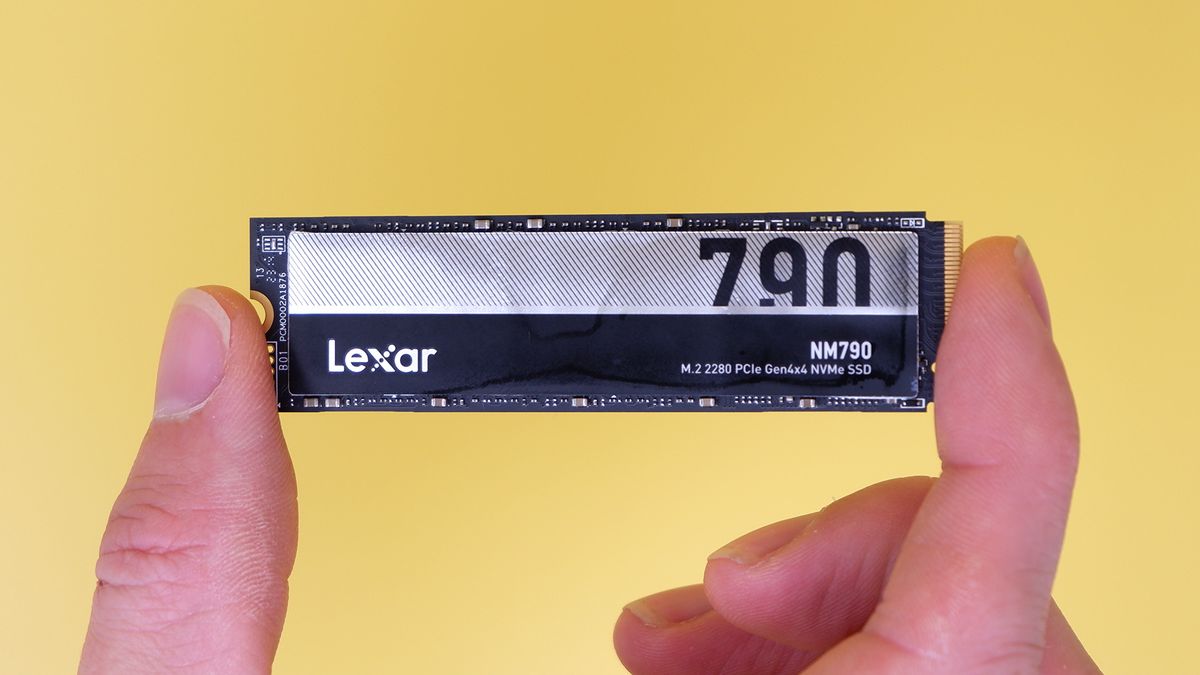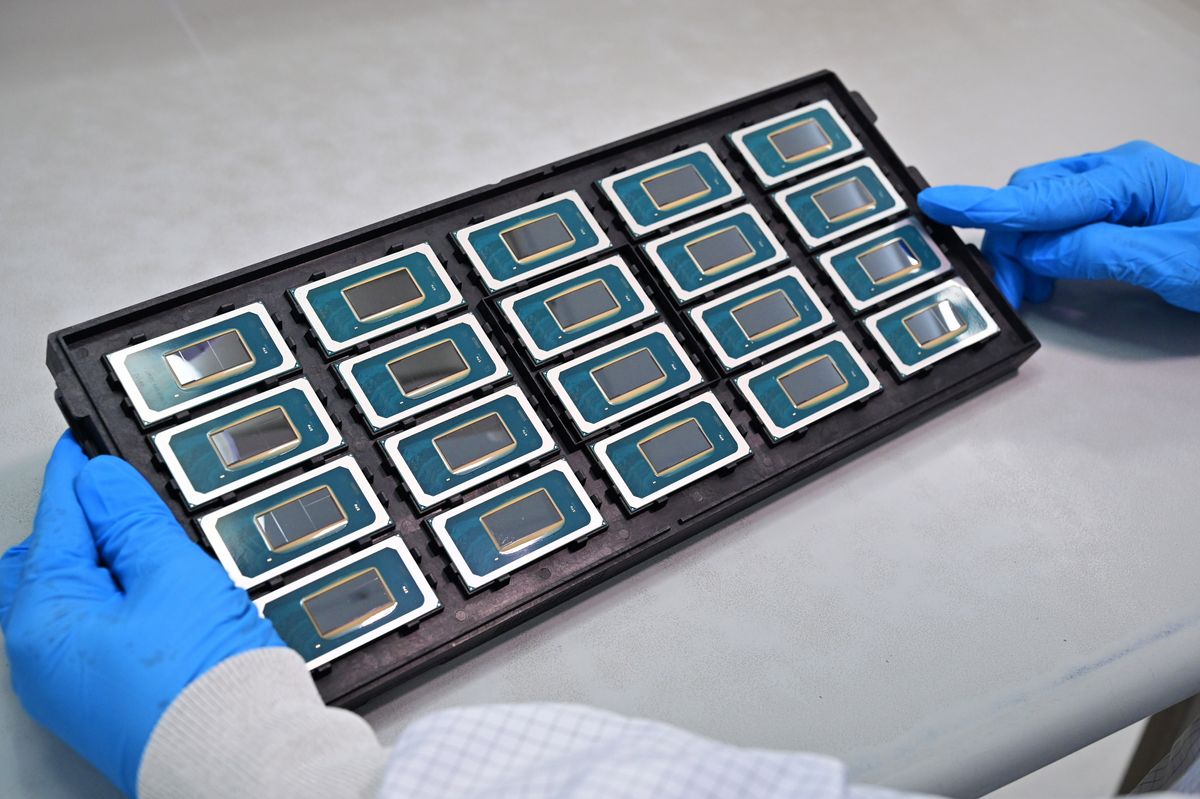With the rising demands of today’s modern games, and the propensity for these games to demand speedy solid-state storage, the demand for 4TB NVMe SSDs is understandably soaring. I’ve got good news for you, as well. These 4TB drives aren’t all that expensive anymore, as proven by this excellent Lexar NM790, which will set you back just $200/£185 (often less).
To put that price into perspective. The Lexar demands 5 cents of your hard earned cash per gigabyte. Indulge me for a second as I flick through our historical test data. You’d have paid around $41 cents per gigabyte of SATA speed storage back in 2013. It’s truly mind-boggling how cheap SSDs have become over the past ten years.
This Lexar NM790 is far quicker than some old SATA SSD from our archives. Rated to 7,400MB/s sequential reads and 6,500MB/s sequential writes, it’s pretty close to as fast as its Gen4 PCIe interface will allow. In my own testing, I measured it at 7,106MB/s seq. read and 6,504MB/s seq. Write—very nearly bang on what’s advertised, which is really great.
It’s also pretty speedy in random workloads, which will make for a snappier system. It comes in at 75MB/s read and 291MB/s, which is in the mix with some of the faster Gen4 and first-wave Gen5 drives we’ve tested.
NM790 specs
PCIe: Gen4
Interface: NVMe
Size: 2280
Controller: MaxioTech MAP1602A
Memory: YMTC 232-layer TLC
Capacity: 4TB (512GB/1TB/2TB available)
Seq reads: 7400 MB/s
Seq writes: 6500 MB/s
Endurance: 3,000 TBW
Price: $200 | £185
For a DRAM-less drive, these are all very impressive numbers.
The Lexar does differ from many others we’ve looked at. We’ve come to expect higher-end Gen4 drives to rely on Phison’s very popular E18 controller, but the Lexar doesn’t. It uses a MaxioTech MAP1602A controller, a less known quantity in the US and EU markets. This makes for overtly different behaviour in testing to more common controllers, but not in a bad way.
For one, this drive is cool under load. While copying our 30GB test folder—a moderately intensive workload—I measured it at only 57°C max. That’s pretty much its base level with an ambient temperature of around 23°C. When transferring over 200GB of data in one steady stream, which you may not do all that often in real-world use, I measured the temperature at 72°C. That’s an admirable temperature from a drive with no active cooling solution and high speeds.
The NM790 uses SLC caching to reach its advertised write speeds. Most modern drives will use some sort of SLC caching to speed up initial file transfers, as the native NAND technology won’t be able to keep up. This means the SSD will operate some of its triple-layer cell (TLC) or quad-level cell (QLC) NAND as single-layer cell (SLC) NAND. The reason being SLC is far quicker than TLC or QLC, though stores less data per cell. Once a file transfer is completed, the SSD will start shifting the data from SLC cache to TLC NAND, freeing up the SLC cache for further transfers. However, if the file transfer exceeds the size of the available SLC cache, the drive will resort to using the slower NAND instead.
The NM790 uses 232-layer TLC NAND manufactured by YMTC. It improves on this with a large SLC cache buffer, made possible due to its large overall capacity. We can test just how fast the SLC cache and this native TLC NAND is with a simple IO test.
I’ve thrown a large, continuous stream of data at the NM790 and plotted the data to the chart below. The fast initial transfer of around 6,400MB/s is the SLC caching at work. The following drop-off around the the 100 second mark is the moment when the faux-SLC cache is expunged and the drive is writing to its TLC NAND instead. While significantly slower than SLC, the TLC NAND on the NM790 isn’t terribly slow itself, managing around 2,500MB/s.
It’s also possible with this test to find how much of the Lexar’s 4TB capacity is able to be used as speedier SLC cache before it defaults to the native TLC. The NM790’s performance dipped after I’d written around 642GB of data to the drive in one steady write transfer, meaning around 16% of the drive’s total 4TB capacity is available as speedier cache. As the drive fills up that SLC cache size will reduce, though with a 4TB drive you have plenty of room to play with before that occurs.
What’s important is you shouldn’t have to resort to the TLC NAND speeds all that often. Even today’s largest games don’t come close to 642GB in size, and it’s unlikely you’ll be transferring this amount without any breaks between—give the SSD some breathing room and that SLC cache will bounce back to full performance.
I had thought we’d really hit the maximum potential for PCIe Gen4 drives with the last wave of SSDs. Considering the first wave of Gen5 drives are here, most exciting new developments in controllers and NAND are being leveraged for that speedier interface. Yet the Lexar proves otherwise. A high capacity SSD that performs just as well as many of today’s top Gen4 NVMe SSDs, for less cash.
If you have a spare Gen4 slot in your machine, and you are desperate for more game storage space, I highly recommend you look to the Lexar NM790 to fill that slot.
The Verdict
90
Lexar NM790
Huge capacity and great value: the Lexar NM790 checks all the boxes.


